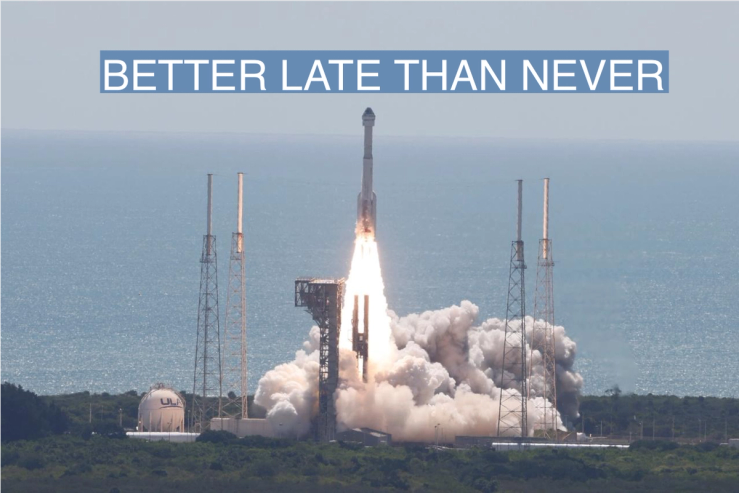The News
NASA and Boeing have successfully launched the Starliner crew space capsule. The capsule, on top of a United Launch Alliance Atlas rocket, is carrying two American astronauts to the International Space Station for a short stay and then, all being well, it will touch back down to Earth next week.
The launch ends a run of failures for Boeing, including several scrubs, technical failures, delays, cost-overruns, and other problems that have both put Starliner years overdue, and enabled SpaceX to cement its lead in the commercial space industry.
SIGNALS
The road to the Boeing launch was long and winding
The Starliner mission is a test to prove Boeing’s capsule can safely transport humans to and from the International Space Station. Right now, only SpaceX’s Crew Dragon performs that function for NASA as Boeing has struggled with its space program for close to a decade. NASA contracted the company to build Starliner in 2014 with a $5 billion award, but engineering and budget issues delayed fulfilling the contract, and Boeing has spent an extra $1.5 billion to get to where it is. The setbacks with the space program compound the issues with Boeing’s airliner business, which is under intense scrutiny for numerous safety issues and failures — although the two divisions operate largely independently of each other.
NASA depends on private industry for space exploration
The Starliner and SpaceX’s capsule, the Crew Dragon, are part of NASA’s program to build a fleet of commercial space taxis, making trips to space a more commonplace occurrence. The two companies were contracted after the Space Shuttle retired in 2011, leaving the US without the ability to send astronauts to space domestically. For years, NASA had to rely on Russia’s Roscosmos space agency, and has paid in excess of $90 million to buy seats on its spacecraft, the Soyuz — but recent geopolitical tensions have caused rifts between the two space agencies. By contracting two American companies rather than one, NASA hopes to create “redundancy” and ensure continuous service even if one of the providers encounters a problem; for years now, the agency has almost entirely relied on SpaceX for all its launches, giving the company a virtual monopoly.
NASA’s goals are marred by underfunding
NASA has ambitious goals for human space exploration — including getting to Mars by 2033. To fulfill them, it will require more government money, some 44 Congressmen argued in a recent letter asking for a $1.67 budget increase for the space agency in 2025. Congressional sources are “doubtful” that the increase will be granted, given the debt-ceiling deal currently in place for next year, SpaceNews reported. This puts the Mars mission in fraught territory — at the end of 2023, NASA announced that a mission to return samples from the Red Planet collected by its rovers had ground to a halt due to a lack of funding, even though the project had been identified as NASA’s “highest scientific priority.”



